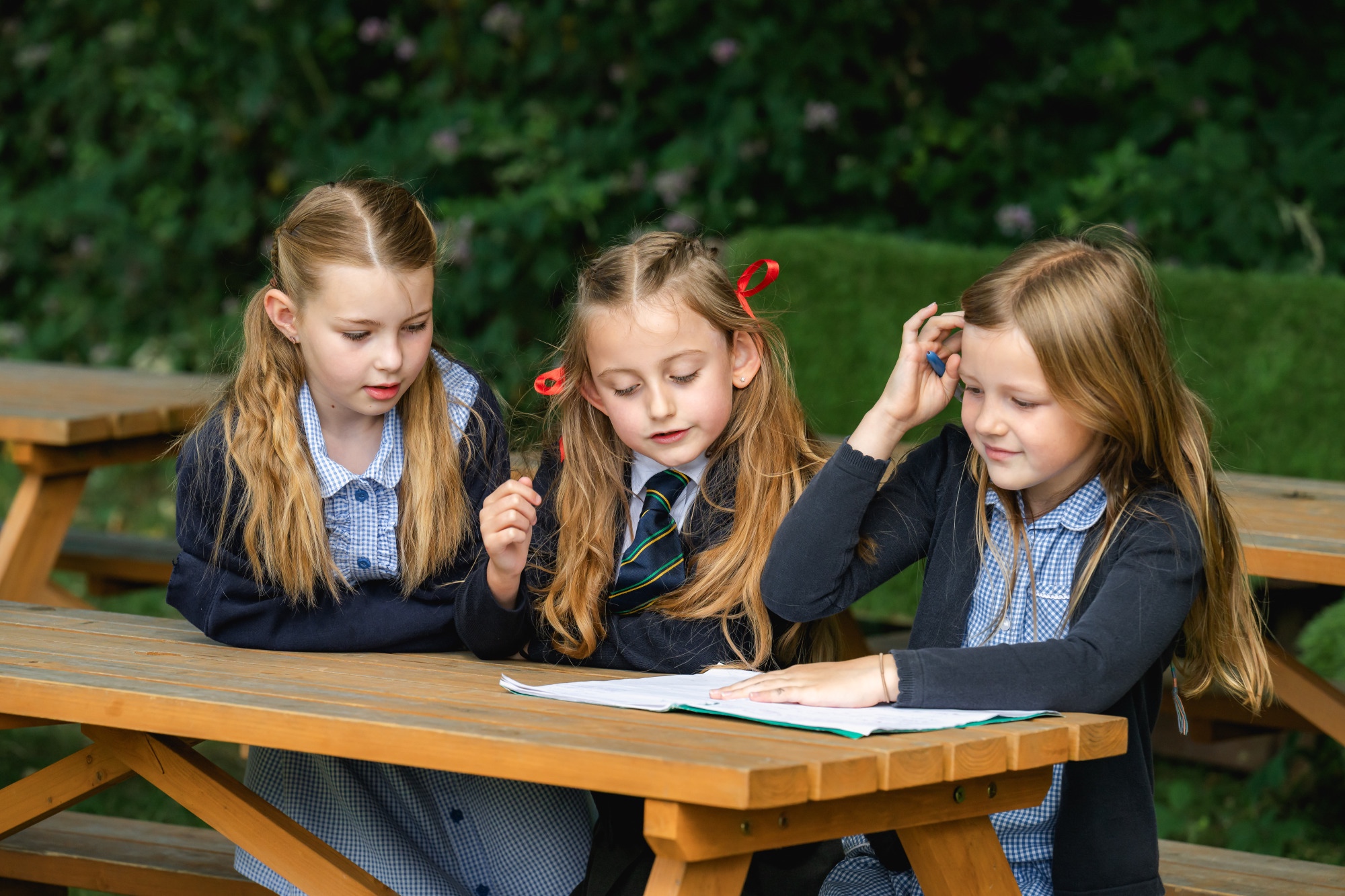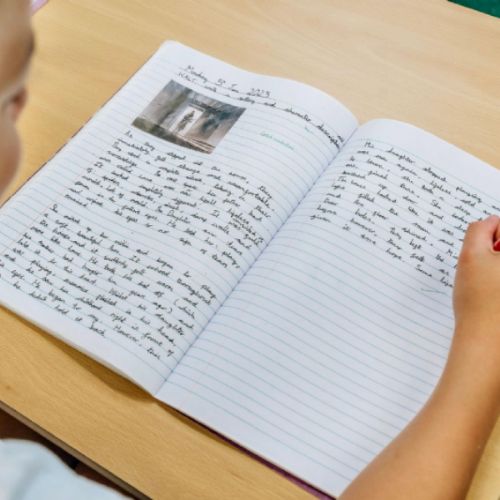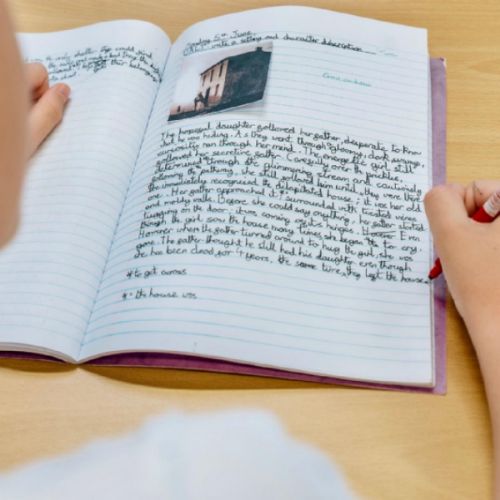English
- The overarching aim at Beaconside is to promote high standards of language and literacy by equipping pupils with a strong command of the spoken and written word, and to develop their love of literature through widespread reading for enjoyment.
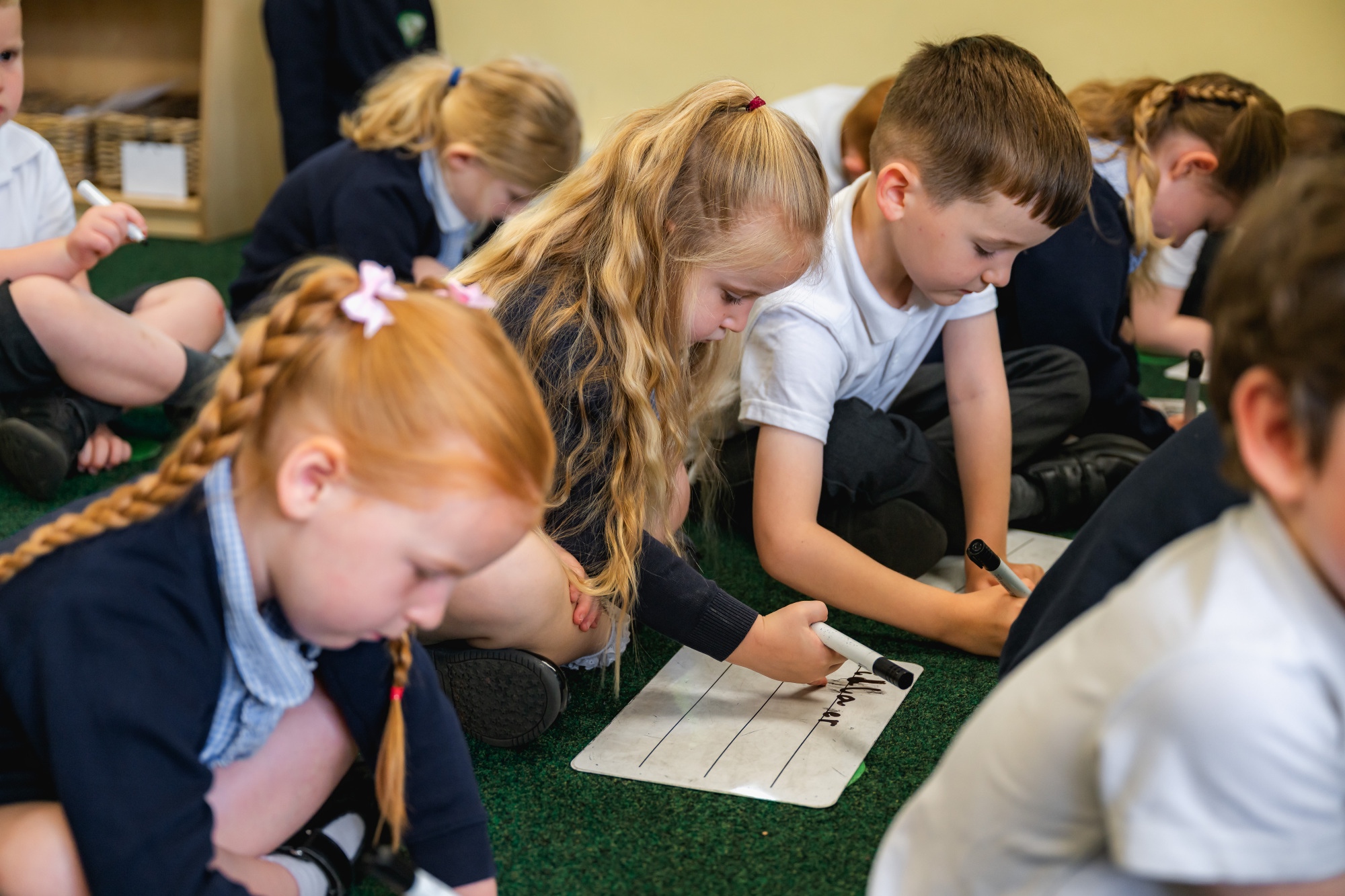
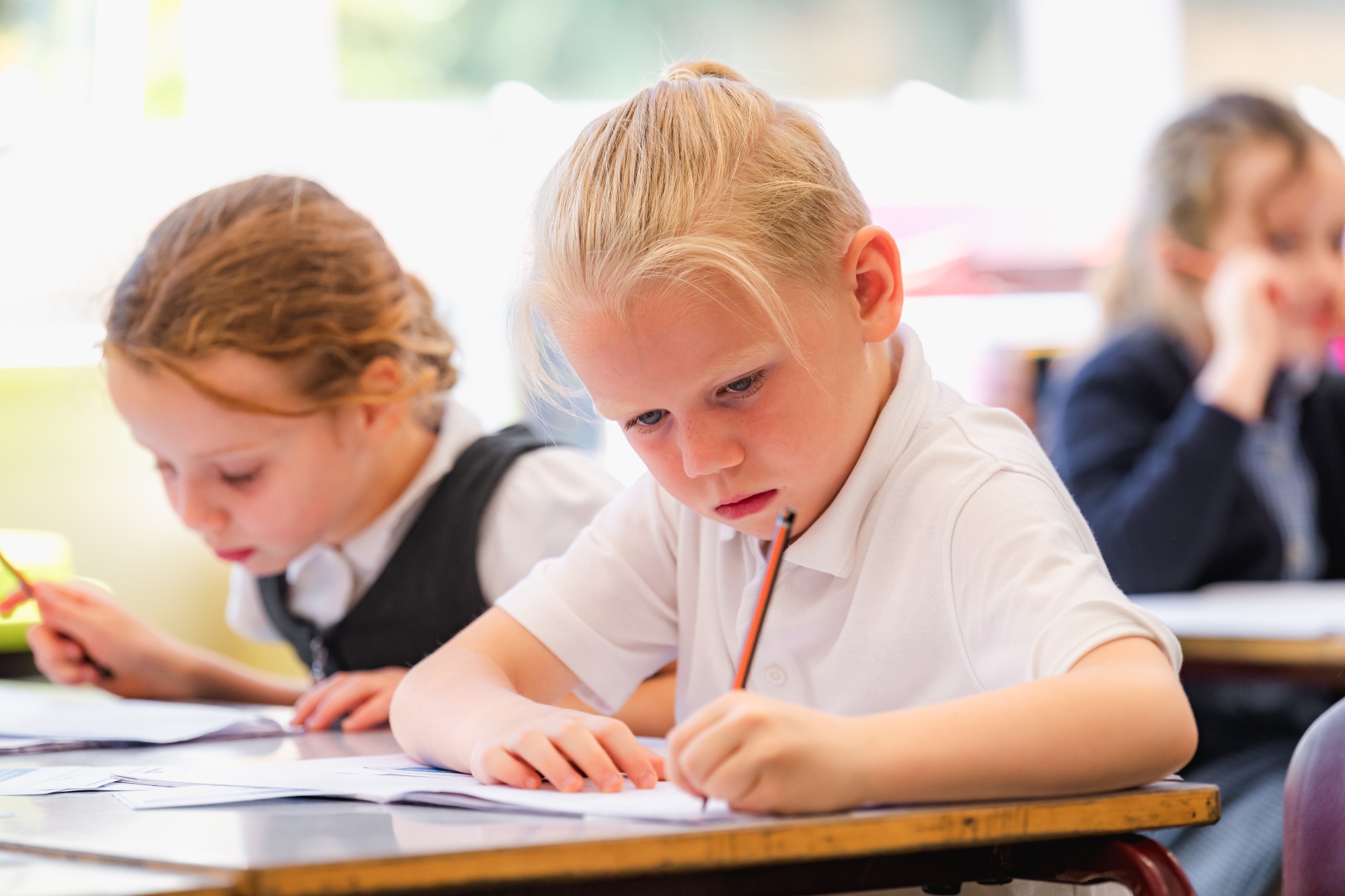

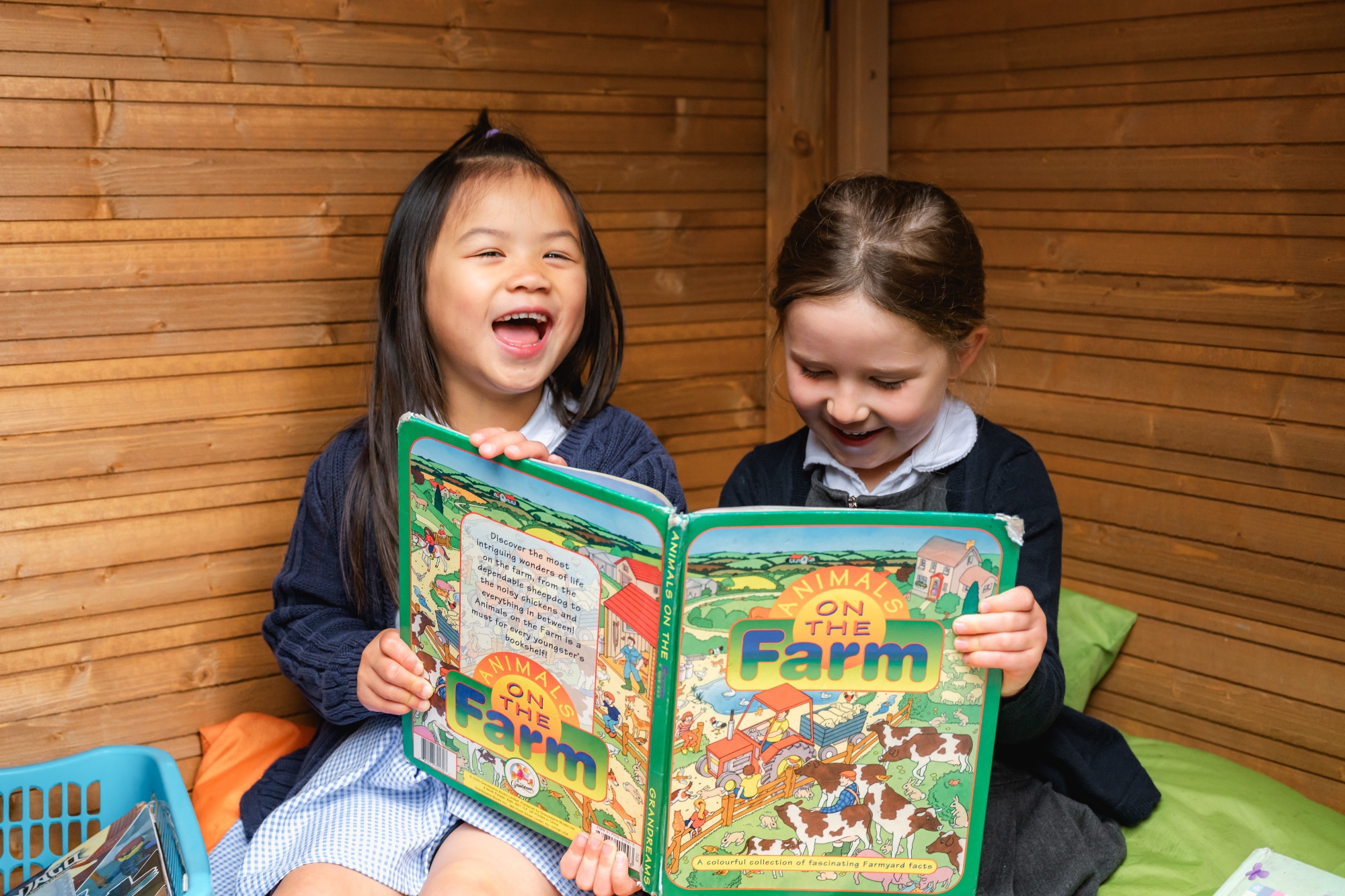
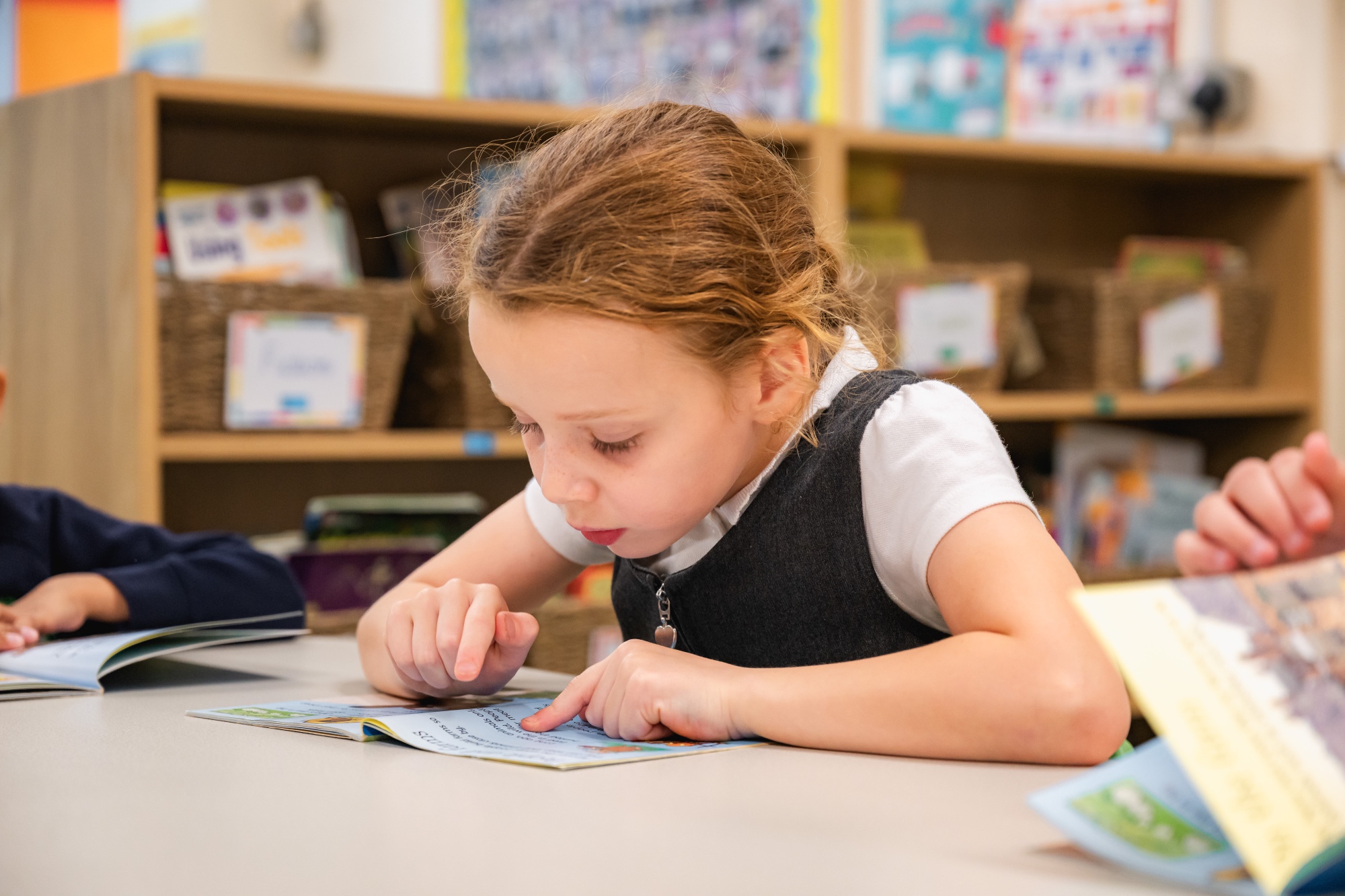
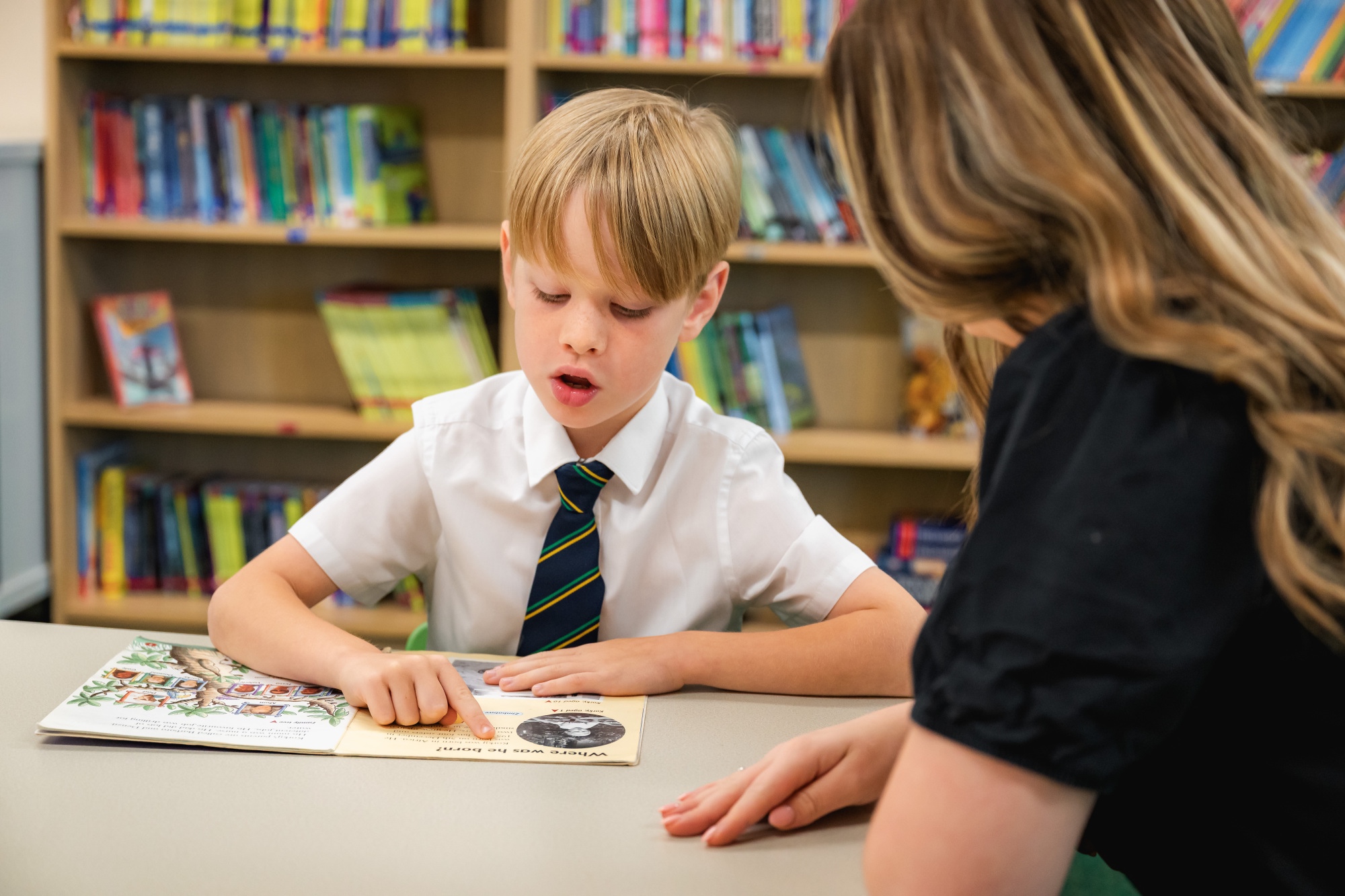

The English curriculum aims to ensure that all pupils:
- read easily, fluently and with good understanding
- develop the habit of reading widely and often, for both pleasure and information
- acquire a wide vocabulary, an understanding of grammar and knowledge of linguistic conventions for reading, writing and spoken language
- appreciate our rich and varied literary heritage
- write clearly, accurately and coherently, adapting their language and style in and for a range of contexts, purposes and audiences
- use discussion in order to learn; they should be able to elaborate and explain clearly their understanding and ideas
- are competent in the art of speaking and listening, delivering formal presentations, demonstrating to others and participating in debate.
Further information can be found in the 'English Curriculum Design Statement: Intent, Implementation, Impact' below.
English Lessons
Sequenced units of work are based on a carefully selected text, that ensures children are immersed into a rich literary world of genres and authors. The text is read, shared, and explored to develop fluency, comprehension and vocabulary skills. This is then the basis for writing tasks, allowing pupils to apply skills and knowledge that they have gained from the text and grammar and punctuation sessions.
An overview for each year group is available on the website. A range of genres are studied in every class covering fiction, non-fiction and poetry.
Phonics and Spelling
Phonics and spelling teaching is delivered in Foundation Stage and Year 1 following the Read, Write Inc programme. Year 2 upwards follow a scheme based on phonics, morphology and etymology.
Handwriting
We follow the Kinetic Letters handwriting scheme; a scheme that is grounded in the theory of kinesthetic learning, where movement and physical engagement are integral to skill acquisition.
Reading
Whole Class Reading – an instructional approach that involves all students in a classroom engaging with a selected text simultaneously. This promotes a shared reading experience, fostering collective learning and discussion.
Class Text – in addition to the texts used in English lessons each class has a class text which is shared for enjoyment and vocabulary development.
Home Reading - A range of reading books are available in the whole school scheme (N-6) to support reading development mainly including Oxford Reading Tree publications starting with Floppy’s Phonics, then progressing to Songbirds, Project X, and Treetops. ‘Real books’ are encouraged and read by pupils as their reading develops to instill a love of reading for pleasure. Books are selected based on ability rather than year group. This complements the core 'home readers' provided for pupils in EYFS and KS1 that are matched to the phonic programme - Read, Write Inc' and the sounds they will be exploring in lessons.
Reading and writing are valued at Beaconside, and success and effort in both areas is rewarded through the Reading Club programme and 'Writer of the Month'.
Our commitment to developing a passion for reading can be seen in the many initiatives we run such as regular story time, peer reading, links with the local library, school book fairs, and adults who promote and support reading within the school.
